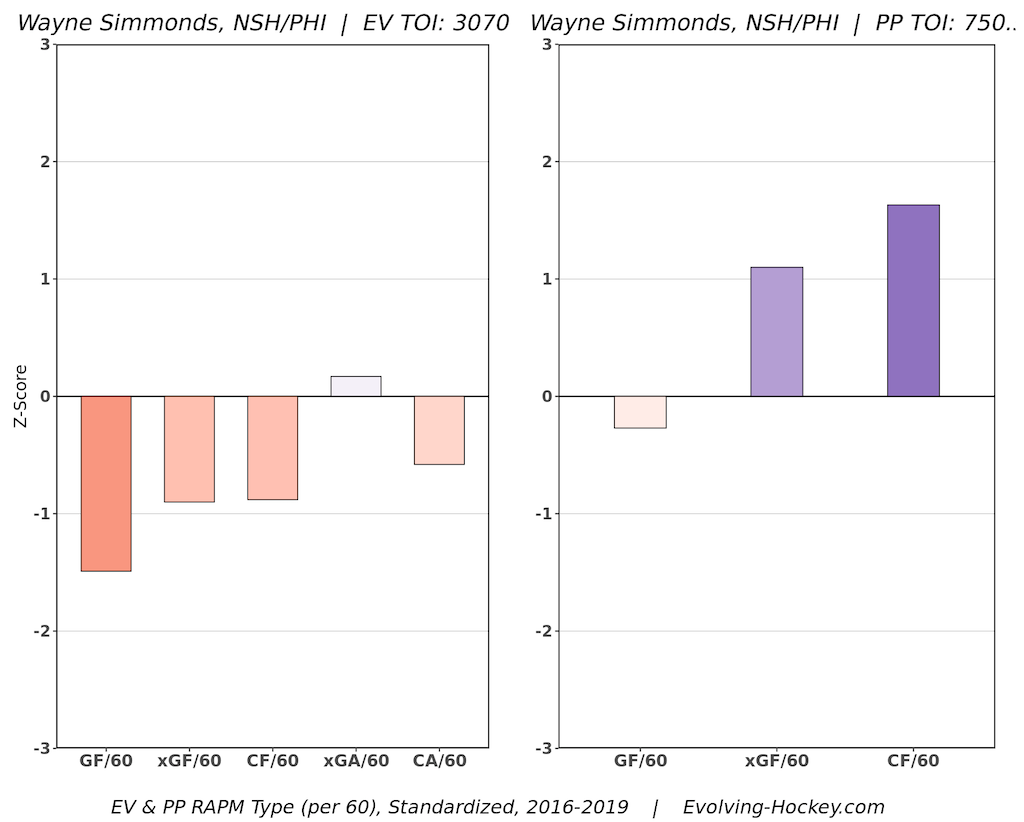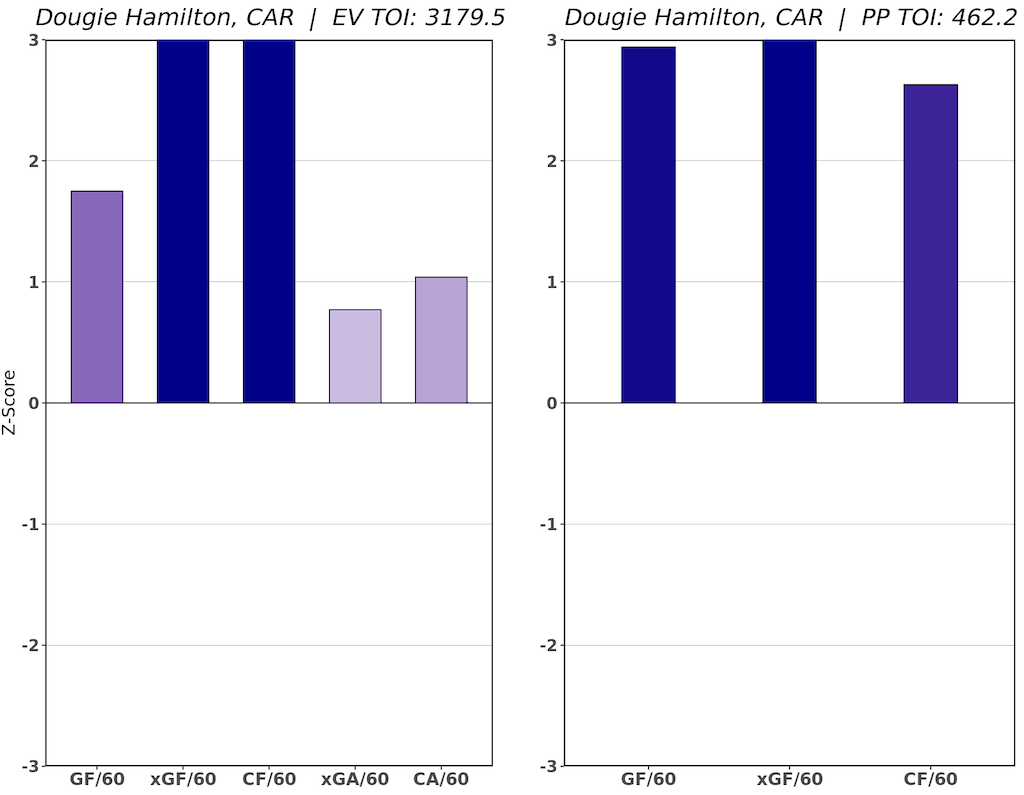The 2021 offseason was a busy one for the New Jersey Devils. They signed Dougie Hamilton to a whopping seven-year, $63 million contract as a free agent. They also signed Jonathan Bernier to back up Mackenzie Blackwood in net and added a scorer in Tomáš Tatar to help Nico Hischier and Jack Hughes. And don’t forget the trade of Ryan Graves, who should fit in well alongside Hamilton on the team’s top pair.
It’s not the first time in recent history that the Devils went all-in during the offseason to improve their team. In 2019, then-general manager Ray Shero went on a similar spending spree. He acquired P.K. Subban and Nikita Gusev in separate trades and signed Wayne Simmonds as a free agent. He also drafted Hughes with the first overall pick that year. Many dubbed the Devils “the winners of the 2019 offseason.” They looked good on paper, but you need on-ice results, and many of those moves did not pan out.
Could the Devils’ 2021 offseason fall as flat as their 2019 moves? It’s always a possibility, but there’s good reason to believe that won’t be the case. Let’s look at why general manager Tom Fitzgerald’s offseason should produce much better results than Shero’s did in 2019.
Shero Went Big, But With Plenty of Risk
After selecting Hughes first overall, Shero decided it was time to begin putting a team together that could compete. They had just drafted Hischier with the first overall pick in 2017, and Taylor Hall was entering the final year of his contract. At the time, the thought was to build a competitive team around Hall, Hughes, and Hischier and hope it’d convince Hall to stick around long-term.
Related: 10 Devils Who Could Play in the 2022 Beijing Winter Olympics
So began Shero’s quest to put a competitive squad together. After drafting Hughes, he acquired Subban from the Nashville Predators on Day 2 of the 2019 Draft. Subban was coming off a down season that saw him finish with a goals above replacement (GAR) of -0.1. It looked like an outlier season, given his past results. But as it turns out, it was the beginning of a dramatic decline from what made him a Norris Trophy finalist for the 2017-18 season. He had the worst season of his career in 2019-20, his first year with the Devils. He rebounded a bit this past season, but it’s clear they did not get the top-pair defenseman he was in most of his time with the Predators.
Shero’s next move was to sign Simmonds as a free agent to a one-year deal worth $5 million. The Devils were hoping to add some edge and scoring punch in signing Simmonds. But again, they’d have to hope for a rebound from him after a tough 2018-19. As it turns out, he was in decline as well, and there were more signs his play was trending downward than Subban. Here’s what Simmonds’ three-year regularized adjusted plus/minus (RAPM) chart looked like when the Devils signed him:

Finally, there was Shero’s acquisition of Gusev, who was the KHL’s reigning MVP after finishing with 82 points in 62 games in 2018-19. It took a bit for Gusev to get going to start the 2019-20 season, but once he did, he was one of the Devils’ best players. He finished with 44 points in 66 games — a 55-point pace over 82 games. It was a solid start to his NHL career and served as a building block heading into 2020-21.
Unfortunately, Gusev’s success with the Devils did not last long. He struggled in new head coach Lindy Ruff’s up-tempo, rush-based system due to his poor skating. He had just five points in 20 games with the team before both sides agreed to a mutual termination of his contract. Gusev would sign with the Florida Panthers to finish the 2020-21 campaign, where he had five points in 11 games.
Related: Devils Receive High Marks for 2021 Offseason
It’s hard to fault Shero for deciding to go big during the 2019 offseason. Obviously, hindsight is 20/20, and calling the Devils the winners of the 2019 offseason was not outlandish at the time. But there was risk in all the moves he made, and none of his additions ended up working out the way the organization had hoped or planned. Given that we know there was some friction between Shero and the Devils’ decision to create an analytics department, it’s not a surprise that ownership moved on from him in Jan. 2020 since his moves did not work and led to the team being in the draft lottery once again.
Fitzgerald Took the Right Approach
On to the 2021 offseason, and Fitzgerald seemed to have a much different approach. It appears there was more collaboration with the analytics team, as most of Fitzgerald’s moves, if not all of them, were analytically inclined.
Let’s start with Hamilton, who should have the biggest impact on the Devils in 2021-22. He’s an elite offensive defenseman who can drive play and quarterback a power play at a high level. And despite what critics say about his defensive game, he knows how to defend. He’s had a significant positive impact at both even strength and on the power play over the last three seasons:

Next up is Tatar, who should give the Devils offense a lift. He averaged 24 goals and 62 points per 82 games over the last three seasons with the Montreal Canadiens. That’s solid production in its own right, but it’s his on-ice results at five-on-five that impressed the most. Since the start of 2018-19, he has Corsi (CF%) and expected goals (xG%) percentages a touch above 59 percent. Part of his success was due to his linemates Brendan Gallagher and Phillip Danault. But even when paired away from them, Tatar’s CF% and xG% came in at 54 percent. He’s a high-end play-driver who excels on the rush, which should work well in Ruff’s system.
Graves might not be the defenseman Hamilton is, but he more than held his own playing alongside Cale Makar with the Colorado Avalanche. He had a CF% of 53.4 percent and xG% of 52.1 percent in his two full seasons with the Avalanche. He was also one of the best defensemen in the league last season in winning puck battles, with a success rate of 62 percent, which ranked seventh (note Subban just a couple of spots below Graves too).
Even Bernier, who’ll be a 1B to Blackwood, had solid underlying numbers with the Detroit Red Wings. His high-danger save percentage of .837 percent ranked 23rd best in the league for goalies with 1000-plus minutes at five-on-five over the last three seasons. That placed him ahead of names such as John Gibson, Robin Lehner and Connor Hellebuyck. That’s to go with a five-on-five save percentage of .918 percent, which is pretty decent too.
In all, there are stark differences between how Shero and Fitzgerald approached the 2019 and 2021 offseasons. Sure, there’s still risk in the moves Fitzgerald made. That’s always the case with trades and free agency. But there’s plenty more reason to believe Fitzgerald’s decisions will work out better than Shero’s. The players he acquired are still performing at a high level and did not have the red flags Shero’s acquisitions did in 2019. Time will tell, but if you want to call the Devils the winners of the 2021 offseason, there’s a better chance you’ll be feeling good about that a year from now than you did about 2019.
* * *
Advanced stats from Natural Stat Trick, Evolving-Hockey